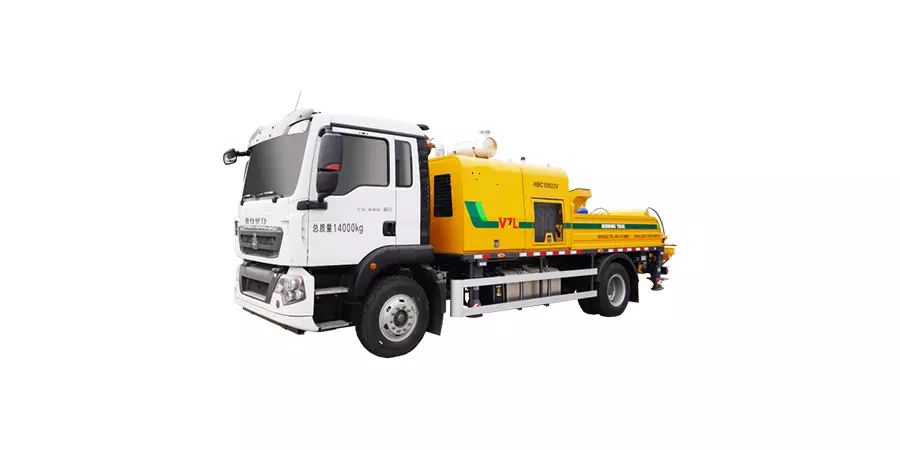Markets

Hydraulic Products Used in Concrete Pumps
Concrete pumps rely on a robust hydraulic system to deliver precise control, high-pressure pumping, and durability in demanding construction environments. Below is a detailed breakdown of key hydraulic components and their roles:
1. Hydraulic Pump
Function: Generates hydraulic power to drive the concrete pumping mechanism and other actuators.
Types:
Pressure: 20–40 MPa.
Flow: 200–600 L/min.
Features: Load-sensing (LS) technology for energy efficiency and adaptive power delivery.
Axial Piston Pumps (e.g., Bosch Rexroth A10VO, Kawasaki K3V):
Gear Pumps: For auxiliary systems (e.g., cooling, lubrication).
2. Hydraulic Motors
Function: Convert hydraulic energy into mechanical motion for mixing and pumping.
Applications:
Mixing Motors (e.g., Danfoss 90 series): Drive agitators to prevent concrete segregation in the hopper.
S-Valve/Rotor Motors: Control the direction of concrete flow.
Boom Rotation Motors: Enable precise movement of the delivery boom.
3. Hydraulic Cylinders
Function: Control critical movements, such as boom articulation and valve operation.
Key Types:
Telescopic Cylinders: Extend the boom to heights of 40–60+ meters (e.g., Parker or Eaton).
Double-Acting Cylinders: Operate the S-valve or rock valve to direct concrete flow.
Hopper Agitator Cylinders: Ensure consistent concrete mixing.
Durability: Hard-chromed rods and abrasion-resistant seals for harsh concrete environments.
4. Control Valves
Directional Control Valves (e.g., HydraForce SV08):
Manage flow direction for boom movement, pumping, and valve switching.
Proportional valves enable smooth speed adjustments (±2% accuracy).
Pressure Relief Valves: Set to 110% of max system pressure to prevent overload.
Load-Sensing Valves: Optimize energy use by matching pump output to demand.
5. Hydraulic Power Unit (HPU)
Components:
Reservoir: Stores hydraulic fluid (ISO VG 46/68) with a capacity of 200–800 liters.
Filters: Multi-stage filtration (βₙ≥1,000 @ 10 µm) to remove concrete particles.
Coolers: Maintain oil temperature ≤60°C (air- or water-cooled).
Redundancy: Dual pumps or accumulators for fail-safe operation.
6. Hydraulic Hoses and Fittings
High-Pressure Hoses (e.g., Gates MegaSys™):
Steel wire-reinforced to withstand 35+ MPa pressures.
Abrasion-resistant covers for durability in rough conditions.
Quick Couplings: Enable fast maintenance and component replacement.
7. Safety and Monitoring Systems
Accumulators (Bladder/Piston Type):
Absorb pressure spikes during valve shifts.
Provide emergency power to retract the boom during pump failure.
Sensors:
Pressure Transducers: Monitor system pressure (e.g., Danfoss MBS 3000).
Temperature Sensors: Prevent overheating in continuous operation.
IoT Integration: Remote diagnostics for predictive maintenance (e.g., pump wear alerts).
Key Brands
| Component | Leading Brands | Notable Models |
|---|---|---|
| Pumps | Bosch Rexroth, Kawasaki | A10VSO, K3V Series |
| Motors | Danfoss, Parker | 90 Series, F11 |
| Valves | Sun Hydraulics, HydraForce | CETOP 03, SV08 |
| Cylinders | Eaton, Enerpac | SPM®, Power Team |
Maintenance Best Practices
Fluid Management:
Replace hydraulic oil every 1,000 hours (NAS 1638 Class 8–10 cleanliness).
Filter Replacement:
Change filters at ΔP ≥0.5 bar differential pressure.
Seal Inspection:
Check cylinder rods and valve seals monthly for wear or leaks.
Cooling System:
Clean radiators regularly to prevent overheating.
Challenges & Solutions
Abrasive Wear: Use tungsten carbide-coated pistons and hardened valve plates.
Contamination: Install offline filtration units and magnetic filters.
Overheating: Opt for synthetic hydraulic fluids with higher thermal stability.
Technological Trends
Electro-Hydraulic Hybrids:
Electric-driven pumps reduce fuel consumption by 30–40%.
Smart Diagnostics:
IoT-enabled sensors predict component failure (e.g., seal degradation).
Automation:
PLC-controlled valves for pre-programmed concrete placement patterns.
Summary
Concrete pumps depend on a precision-engineered hydraulic system to deliver high-pressure concrete placement with reliability. Core components include axial piston pumps, radial motors, telescopic cylinders, and smart valves, all designed to withstand abrasive conditions. Innovations like IoT integration and energy-efficient LS systems enhance performance, while rigorous maintenance ensures longevity in high-stakes projects like skyscraper construction and tunnel lining.
